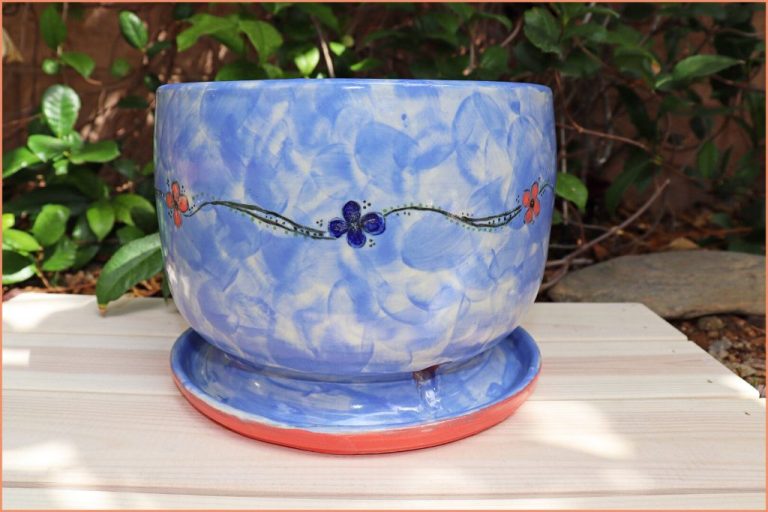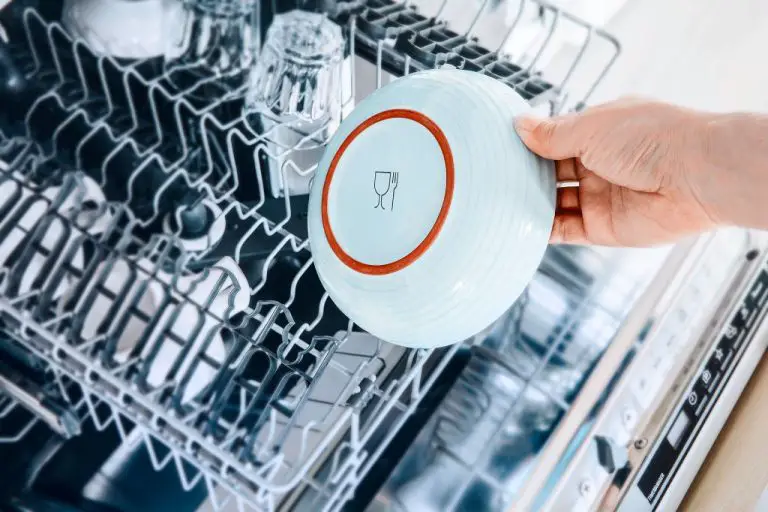How Do You Seal Terracotta Pots For Water Features?
Terracotta pots are a popular choice for decorating water features and fountains in gardens and outdoor spaces. The natural reddish-orange color and handmade look provide a nice rustic aesthetic. However, unglazed terracotta is porous and will soak up water quickly, resulting in leaks, cracking, and damage over time if left unsealed. It’s important to properly seal terracotta pots before using them in fountains, ponds, or other water applications.
In this comprehensive guide, we’ll discuss the pros and cons of using terracotta for water, go over the different sealing options available, provide step-by-step instructions for sealing, and offer troubleshooting tips. We’ll also talk about proper care and maintenance for sealed terracotta pots. By the end, you’ll have all the information you need to successfully seal your terracotta pots to hold water for decorative water features and fountains.
Pros and Cons of Terracotta Pots
Terracotta pots offer some great benefits for water features and ponds. As natural clay products, they have an earthy, rustic look that can complement gardens and outdoor spaces beautifully. The porous nature of terracotta allows plants’ roots to breathe and prevents overwatering. Terracotta is also more flexible than materials like concrete or plastic, so there is less risk of cracking from freezing temperatures or damage from dropping.
However, the porosity that makes terracotta beneficial for plant health can be a disadvantage for retaining water. Water will naturally seep through unglazed terracotta, requiring more frequent refilling and topping off of water features. The clay material is also comparatively fragile, so terracotta pots can crack or chip more easily than other options. Using them for ponds and fountains requires taking some extra steps to waterproof and protect the terra cotta. Plant roots or algae growth can also stain the pots over time. Overall though, with proper sealing and care, terracotta pots make excellent, natural-looking containers for backyard water features.
Preparing the Pots Before Sealing
Before applying any type of sealant to terracotta pots, it’s important to properly prepare them first. This ensures the sealer adheres correctly and provides maximum protection.
Start by closely inspecting the pots for any cracks, chips or other flaws. Small flaws can be patched with waterproof silicone or epoxy, but cracked pots should be replaced. Inspect the drainage hole as well to ensure it is fully intact.
Thoroughly clean each pot, inside and out, with warm soapy water. Use a scrub brush or scouring pad to remove any dirt, deposits, efflorescence or build up. Rinse well and allow the pots to dry fully before sealing. Any moisture trapped under the sealer can cause bubbles or peeling.
Wiping the pots with rubbing alcohol right before sealing can help remove any last traces of dirt or oil that could affect adhesion. Handle the pots with gloves after cleaning so oils from skin don’t transfer back on.
Sealing Options
There are a few different sealers you can use to waterproof terracotta pots for water features:
Varnish
Varnish is a popular choice for sealing terracotta. It comes in various finishes like high-gloss, satin, and matte. Varnish forms a protective coating over the porous clay and prevents water from soaking in. Pros of varnish include its affordability, ease of application, and durability. Cons are that it can yellow over time and may need to be reapplied every couple of years.
Epoxy Resin
Epoxy resin creates an impermeable glossy finish when used to seal terracotta. It provides excellent protection against water absorption. Pros of epoxy resin are its superior water resistance and long-lasting finish. Cons are that it is more expensive than varnish and requires careful application to avoid drips and uneven coverage.
Waterproofing Chemicals
Waterproofing chemicals like sodium silicate are specially formulated to penetrate porous materials like unglazed clay. When applied properly, they react below the surface to seal the pores. Pros are they offer invisible protection that doesn’t alter the natural look of the terracotta. Cons are they can be tricky to apply correctly and may need reapplying annually.
How to Apply Sealers
Applying a sealer to terracotta pots is a simple process, but following some key steps will ensure you get complete, even coverage.
For liquid sealers:
1. Clean the pots thoroughly before starting. Remove any dirt or debris.
2. Apply the sealer liberally using a paintbrush, sponge, or spray bottle according to the product instructions. Make sure to get into all the nooks and crannies.
3. Allow the recommended drying time before applying a second coat. Two or three coats are ideal for maximum protection.
4. Rotate the pot as you work to ensure the sealer gets on the inside lip and base.
For wax sealers:
1. Ensure the pots are completely clean and dry first.
2. Use a clean cloth to apply a thin, even coat of wax. Rub it vigorously into the surface.
3. Apply a second coat once the first has dried for extra protection.
4. Buff the pots with a soft cloth to remove any excess wax and create a nice sheen.
Be patient during the application process. Rushing through could result in uneven coverage and lead to leakage or chipping down the road. Take your time to do it right the first time!
Curing and Drying Time
Curing and drying times vary depending on the type of sealer used. Here are some general guidelines:
Acrylic sealers – Allow 24-48 hours of curing time before submerging in water. Drying times range from 1-3 hours.
Epoxy resin sealers – Require 72 hours of curing time before water exposure. Drying takes 6-12 hours.
Polyurethane sealers – Cure in 5-7 days and dry in 2-3 hours.
Lacquer sealers – Cure fully in 5-7 days. Drying takes 1-2 hours.
To help accelerate curing times, apply sealers in thin layers and ensure proper ventilation and air circulation while curing. Gently warming the pots with a space heater or heating pads can also help speed up curing. Just avoid excessive heat over 100°F which can cause bubbles. Be patient and allow the full curing times for maximum waterproofing.
Testing the Seal
Once the sealer has fully cured on your terracotta pots according to the manufacturer’s instructions, it’s important to test that the seal is watertight before using the pots for an outdoor water feature. Here are some tips for testing the seal:
Fill the sealed pots completely with water and let them sit for several hours. Check the outside of the pots periodically for any signs of moisture or water seepage. Pay close attention around the base, rim, and any cracks or joints in the pots. Look closely to see if any water beads are forming on the outside surfaces.
If you see any leaks or moisture, empty the pots completely and allow to dry fully. Reapply another coat of sealer to problem areas using a small brush to target seepage points. Let the newly sealed pots cure and then retest with water.
If no leaks are found after several hours of testing with water, empty the pots and allow them to dry fully before using for plants and water features. The seal is now watertight and ready for use outdoors.
Be sure to check sealed pots periodically while in use for any new leaks that may develop over time. Resealing may be necessary after prolonged outdoor use.
Troubleshooting Issues
Even when properly sealed, terracotta pots may still allow some water to seep through over time. If you notice your sealed pots are still leaking or sweating, don’t worry – the seal just needs to be reapplied.
First, allow the pot to dry fully. Then lightly sand the outside surface with fine grit sandpaper to remove any existing sealant and roughen up the surface. Wipe away any dust and apply another 1-2 thin coats of sealer, allowing ample drying time in between coats. This will create a fresh seal over the terracotta.
For pots that see frequent use in water features, reapplying sealant every 1-2 years is recommended. This will ensure the protective barrier remains strong over time, preventing moisture seepage and potential cracking/spalling damage to the vulnerable terracotta material.
When resealing, be sure to use the same sealer product previously applied for best adhesion results. Follow the product instructions closely. With proper care and maintenance, sealed terracotta pots can provide lasting beauty in outdoor water features.
Caring for Sealed Pots
After properly sealing your terracotta pots, there are some important care and maintenance steps to take to ensure the seal lasts as long as possible:
Handling: Be gentle when handling sealed pots as the seal can chip or scratch off if subjected to rough treatment. Avoid scraping tools or brushes against the surface and do not stack other items on top of sealed pots. When picking up a sealed pot, grasp it from the base or edges rather than the sides to avoid damaging the seal.
Long-Term Care: Though sealing provides protection, terracotta is still porous material. Check sealed pots periodically for cracks, chips or signs of deterioration. If the seal appears damaged or worn, consider applying another layer of sealer to maintain waterproofing and extend the life of your pot.
Resealing Over Time: Most sealers last 1-3 years before needing reapplication. The longevity depends on the sealer used and how well the pot is cared for. Set a reminder to inspect pots yearly and reseal as needed. Look for signs like dampness on the exterior, mineral deposits, faded color, or a white, chalky appearance signaling the seal is breaking down. Resealing before the previous layer fails completely provides the best results.
Alternative Options
While terracotta is a classic material for water features, there are some alternatives worth considering:
Concrete
Concrete planters and fountains are very durable and less porous than terracotta. Concrete won’t require sealing and will hold up well to weathering. The downside is that concrete is much heavier and doesn’t have the same artisanal, handcrafted appearance of terracotta.
Metal
Fountains and pots made from metals like copper or galvanized steel can be very striking and decorative. Metals are impervious to water and don’t require sealing. However, they can show corrosion, oxidation, and mineral deposits from water over time. Metals are also quite heavy.
Fiberglass
Fiberglass planters have a smooth, modern look and won’t absorb moisture like terracotta. They are lightweight compared to concrete or metal. However, cheaper fiberglass can start to degrade, crack, or lose its color over time when exposed to sunlight and water.
Wood
Wood offers a nice natural, rustic aesthetic for water features. When properly sealed, wood can stand up well to outdoor water exposure. But it does require diligent maintenance and re-sealing over time. Unsealed wood will quickly rot when used outside with standing water.
Overall, terracotta remains a compelling choice for its artisanal look, reasonable weight, and classic beauty. With proper prep and sealing, terracotta pots will provide many years of charm and enjoyment in water gardens and fountains.



